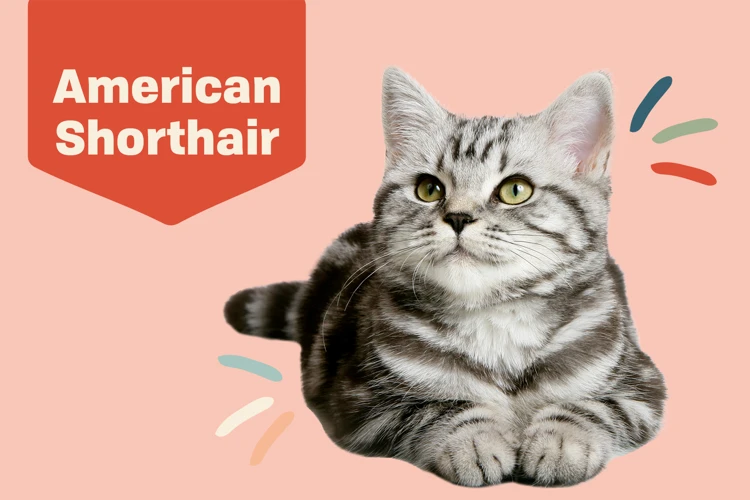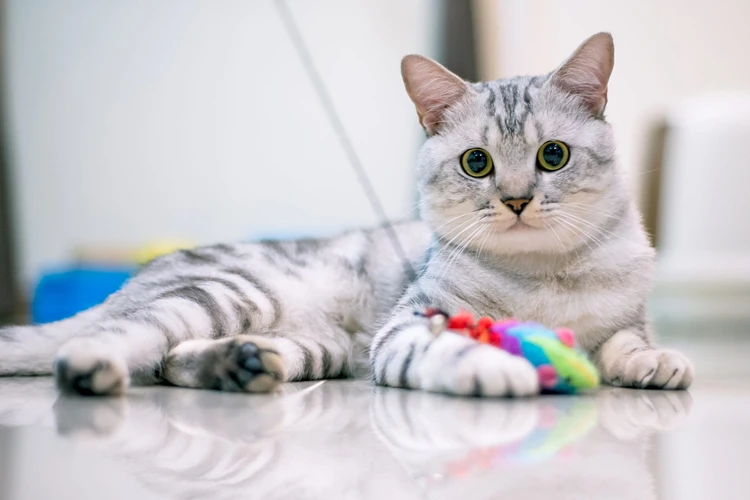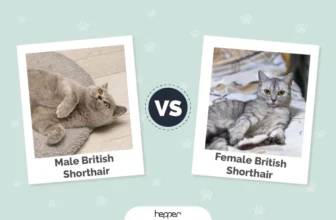As a cat owner, it’s not uncommon to witness some form of aggression in our feline friends. However, dealing with aggression in American Shorthairs can be especially challenging. These furry felines are known for their playful and friendly nature, but when they become aggressive, it can be difficult to know how to handle the situation. In this article, we’ll dive into the various types of aggression, potential causes, and ways to prevent and deal with aggressive behaviors in American Shorthairs. Whether you’re a seasoned cat owner or a new pet parent, understanding and managing aggression can help create a peaceful and harmonious environment for you and your furry friend.
Understanding Aggression in American Shorthairs

As pet owners, it’s essential that we understand and recognize the potential for aggressive behaviors in our American Shorthairs. Being able to identify the signs of aggression and the causes behind it is the first step in preventing negative outcomes. In this section, we will explore the different types of aggression and the various factors that contribute to them. We’ll also cover how to recognize the signs of aggression in American Shorthairs, and what to do if you notice these behaviors. By the end of this section, you’ll have a better understanding of your cat’s behavior and how to keep them safe and happy. For more information on safety measures you can take, check out our article on American Shorthairs and climbing safety.
Types of Aggression
Aggression in American Shorthairs can manifest in different ways – it’s important to understand the different types of aggression to appropriately address and resolve them.
- Inter-male aggression: This type of aggression occurs between male American Shorthairs and it is usually triggered by competition for a territory or a mate.
- Maternal aggression: This occurs in mother American Shorthairs and is aimed at protecting the kittens from perceived danger.
- Predatory aggression: Predatory aggression is motivated by the American Shorthair’s natural hunting instincts. This type of aggression is triggered by the sight of prey.
- Redirected aggression: This occurs when an American Shorthair is aroused by one stimulus and attacks another. Redirected aggression is usually a result of frustration and can happen when an American Shorthair sees a potential prey animal through a window but can’t reach it, so they redirect their aggression to a nearby person, for example.
- Play aggression: This occurs when an American Shorthair becomes too rough during playtime. They might claw or bite their owner when they become overly excited.
- Territorial aggression: This occurs when an American Shorthair is protecting their territory from intruders, including other cats or humans.
Understanding the type of aggression that an American Shorthair is displaying is important in determining the best way to address the behavior. Some types of aggression may require intervention from a professional, while others can be corrected with proper training and management.
Causes of Aggression
Aggressive behavior in American Shorthairs can have several underlying causes. It is important to understand these causes to help prevent and manage aggression effectively. Here are some common causes of aggression in American Shorthairs:
- Territorial behavior: American Shorthairs are known to be territorial. They can become aggressive when another cat or even a new person enters their space. It is important to introduce new pets and people gradually to avoid conflicts.
- Predatory instinct: American Shorthairs have a strong hunting instinct. They may become aggressive when they see a moving object or toy, thinking it is prey. It is advisable to provide them with toys that are safe and appropriate for their breed.
- Maternal aggression: Female American Shorthairs can be fiercely protective of their kittens. They may become aggressive towards other animals or people if they perceive them as a threat to their young. It is important to give them a quiet space and prevent interactions with other pets during this period.
- Stress and anxiety: Stressful or anxiety-inducing situations can trigger aggressive behavior in American Shorthairs. Cats can become anxious due to changes in their environment, lack of stimulation, or fear. It is essential to manage their stress levels and make sure they feel safe and comfortable in their surroundings. Check out our article on cat stress management tips to learn more.
- Health issues: Pain, illness, or discomfort can make American Shorthairs more aggressive than usual. It is important to take them for regular checkups and keep them healthy.
Understanding what causes aggression in your American Shorthair can help you manage their behavior better and prevent conflicts. Be sure to observe their body language and read more about it in our article on American Shorthair body language. Positive reinforcement techniques discussed in our article on positive reinforcement in American Shorthairs can also help in managing their behavior.
Recognizing Aggressive Behaviors
Recognizing aggressive behavior in American Shorthairs is an essential step in addressing it effectively. It’s crucial to identify the type of aggression displayed and understand its underlying causes. Watch out for physical manifestations like hissing, biting, and scratching, but also consider more subtle signs like body posture, vocalizations, and changes in behavior. Here’s a table that summarizes the common aggressive behaviors in American Shorthairs:
| Aggressive behavior | Description |
|---|---|
| Protective aggression | This behavior is triggered by the cat’s protective instinct towards its territory, owner, or other pets. The American Shorthair might hiss, arch its back, and show its teeth to warn off intruders. |
| Play aggression | American Shorthairs have a playful nature and might display aggression during playtime. However, the bites and scratches are usually gentle and not intended to harm. |
| Fear aggression | If the American Shorthair feels threatened or afraid, it may respond with fear aggression. This behavior is characterized by defensive postures, growling, and avoidance. |
| Redirected aggression | American Shorthairs might display aggression towards a target that is not the actual cause of their frustration. This behavior happens when they can’t reach the source of their agitation, like an intruder outside the window. |
| Maternal aggression | Female American Shorthairs with kittens might display aggressive behaviors towards humans or other pets if they perceive a threat to their offspring. |
If you’ve noticed any of these signs of aggression in your American Shorthair, don’t ignore them. Addressing the problem head-on can help prevent it from escalating. If you’re dealing with territorial aggression specifically, there is a helpful article you can read about it by following this internal link: /territorial-behavior-american-shorthairs/.
Dealing with Aggressive Behaviors in American Shorthairs

As much as we love our American Shorthair cats, there may come a time when their aggressive behavior becomes a challenge we must face. Whether it’s confrontational, predatory, redirected or maternal aggression, it can be perplexing for owners to deal with. In this section, we will explore some effective ways to tackle aggressive behavior in your American Shorthair cat, so you can enjoy a peaceful and happy life with your feline companion. Let’s take a look at some practical ways to manage different types of aggression in American Shorthairs.
Confrontational Aggression
Confrontational aggression is a type of aggression that is commonly observed in American Shorthairs. This behavior is often seen when a cat is defending its territory or when it feels threatened by a perceived threat. In such cases, the cat may become hostile towards the alleged threat, and sometimes it may get provoked to attack.
Symptoms of confrontational aggression
The following table outlines some of the symptoms of confrontational aggression in American Shorthairs:
| Symptoms of Confrontational Aggression |
|---|
| Growling |
| Hissing |
| Swatting |
| Scratching |
| Biting |
| Puffed tail |
| Flattened ears |
If you notice any of these symptoms in your American Shorthair, it’s best to keep your distance and avoid provoking the cat any further.
Managing confrontational aggression
To manage confrontational aggression in American Shorthairs, the following tips may be helpful:
– Provide your cat with a safe space where it can retreat if it feels threatened
– Give your cat plenty of exercise and mental stimulation to keep it occupied
– Avoid punishing your cat for exhibiting aggressive behavior as this may make the behavior worse
– Reward your cat for good behavior with treats and praise
– Consider using anti-anxiety medication for your cat if the aggression is severe.
It’s important to note that aggression in American Shorthairs may also be a sign of an underlying health issue or pain. If the aggression persists, seeking veterinary assistance is advisable.
If you want to learn more about American Shorthair behavioral care, consider reading our article on American Shorthair Kitten Development and Behavioral Care.
Predatory Aggression
Predatory Aggression is common in American Shorthairs and may be triggered by anything that behaves like prey, such as small animals or fast-moving objects. This instinctual behavior is natural in cats but it can lead to dangerous situations if left unaddressed. This type of aggression is often displayed through stalking, pouncing, and biting.
So, how to deal with it?
- Keep Potential Prey Away: To prevent your American Shorthair from displaying this type of aggression, it is important to keep small pets out of reach. You can also reduce the amount of time your cat spends outdoors, especially if there are wild animals in the area
- Interactive Play: Providing interactive play sessions can distract your cat from predatory behaviors. You can use toys that mimic the behavior of prey such as feather wands or remote-controlled toys.
- Training: Training your cat to come to you on command can be a useful tool to stop predatory aggression. When you notice your cat displaying aggressive behavior, use a strong command to make them stop and come to you.
It is important to understand that this type of aggression is not due to a lack of training or socialization, rather it is an innate behavior in cats. If you have other pets in the house, it is important to monitor interactions with your American Shorthair to avoid any potential harm.
If you want to learn more about how gender affects the behavior of American Shorthairs, check out our article on Gender Impact on American Shorthairs: Male vs Female. Also, if you are thinking about introducing a new pet to your American Shorthair, be sure to read our article on How to Introduce Your American Shorthair to New Pets. Additionally, if you are curious about how litter preferences affect American Shorthairs, check out our article on American Shorthair Litter Box Preferences.
Redirected Aggression
Redirected aggression is a complex situation that can be dangerous to both your American Shorthair and yourself. This type of aggression happens when your cat gets upset or frightened over something they cannot reach or confront, and then channels that frustration onto whoever or whatever happens to be nearby. This can include other family pets or people that are in the home. It is important to understand the signs of redirected aggression and how to deal with it.
Recognizing Redirected Aggression
Redirected aggression often occurs when your American Shorthair is unable to get to a perceived threat. Signs that your cat might be experiencing redirected aggression can include:
| Signs of Redirected Aggression | Explanation |
|---|---|
| Pacing back and forth | Your cat may be trying to find a way to get to the perceived threat. |
| Dilated pupils | This can indicate that your cat is agitated and ready to attack. |
| Growling or hissing | Your cat might be warning others to stay away. |
| Lunging or attacking suddenly | This can be a sign that your cat is experiencing redirected aggression. |
Dealing with Redirected Aggression
If you suspect that your American Shorthair is experiencing redirected aggression, it is important to give your cat space and try to remove them from the situation causing their fear. Do not try to intervene or pick up your cat, as this can result in injury to you or your pet. Instead, try these tactics:
| Dealing with Redirected Aggression | Explanation |
|---|---|
| Give your cat space | Stay back until your cat is calmer and able to retreat on their own. |
| Remove your cat from the situation | If possible, lead or carry your cat to a safe and quiet space. |
| Eliminate potential triggers | If you can identify the cause of your cat’s fear, remove it from the environment. |
| Consult with a professional | If your cat continues to exhibit redirected aggression, it may be beneficial to speak with a cat behaviorist or veterinarian. |
Redirected aggression can be challenging to deal with, but it is important to remember that your American Shorthair is not trying to harm you or other pets intentionally. By recognizing the signs and taking appropriate action, you can help prevent injury to yourself and your cat while working towards resolving the issue.
Maternal Aggression
Maternal aggression is common in American Shorthairs who have recently given birth. A mother cat may become extremely protective of her kittens and may show aggressive behavior towards any perceived threat. This aggression is typically displayed through growling, hissing, and occasionally even physical attacks.
Causes: The main cause of maternal aggression is a cat’s natural protective instincts towards her young. It is important for owners to give the mother cat sufficient space and privacy during the first few weeks after giving birth in order to avoid triggering this behavior.
Recognizing: Some common signs of maternal aggression may include a mother cat growling or hissing at strangers or even at her human family members. She may also appear tense and protective, keeping her kittens close to her and not allowing anyone to come too close.
Dealing: It is important to approach a mother cat with caution during this time and always give her plenty of space. It is best to avoid interacting with her kittens unless absolutely necessary. If you must handle the kittens, it is important to do so gently and with the mother cat’s permission.
If the maternal aggression is particularly severe, it may be necessary to separate the mother cat from her kittens for short periods of time. This can be done by placing the kittens in a separate room or enclosure, where they are safe and have everything they need. In some cases, it may also be necessary to seek the assistance of a veterinarian or animal behaviorist.
Preventing: The best way to prevent maternal aggression is to provide a quiet and comfortable space for the mother cat to care for her kittens. This should include a quiet room with a comfortable, secluded spot for the mother cat to rest and nurse her young. It is also important to keep other pets and strangers away from the mother cat and her kittens during this time.
| Causes | Recognizing | Dealing | Preventing |
|---|---|---|---|
| A cat’s protective instincts towards her young | Growling, hissing, and physical attacks towards perceived threats | Giving the mother cat space, approaching with caution, handling kittens gently and with permission | Providing a quiet and comfortable space for the mother cat to care for her kittens, keeping other pets and strangers away |
Maternal aggression is a natural behavior for American Shorthairs who have recently given birth. However, with proper care and precautions, this behavior can be managed and minimized.
Preventing Aggression in American Shorthairs

As a cat owner, preventing aggressive behavior in your American Shorthair is essential for promoting a harmonious home environment. Fortunately, there are several preventative measures you can take to minimize the likelihood of your feline friend exhibiting aggressive behavior. By incorporating a few basic lifestyle and training changes, you can foster a peaceful relationship with your American Shorthair. In this section, we’ll explore some effective strategies for preventing aggression in cats, ensuring a happy and safe home for both you and your pet.
Environment and Stimulation
American Shorthairs, like all cats, rely heavily on their environment and stimulation to maintain their physical and mental health. A boring and unstimulating environment can easily lead to aggression and hostile behavior. Here are some ways to ensure your American Shorthair’s environment is stimulating:
- Provide toys: Toys are essential for your cat’s mental and physical stimulation. Without toys, your cat will get bored and find other ways to entertain themselves, often at your expense.
- Provide scratching posts: A sturdy scratching post can help your cat release their frustration and reduce their aggression. Cats love to scratch to mark their territory and stretch their muscles, so providing a scratching post can help them maintain their physical health.
- Provide hiding places: Cats need a space to retreat to when they feel overwhelmed or anxious. Providing a hiding place can help reduce their stress levels and allow them to feel more secure in their environment.
- Rotate toys: Cats can quickly lose interest in toys if they are always available. Rotate your cat’s toys every few days to keep them engaged and interested in their surroundings.
It is also important to provide your American Shorthair with appropriate environmental stimulation. This can include playing with them using a toy or laser pointer, placing a bird feeder outside a window for them to watch, or providing them with a comfortable perch to look out the window.
Taking these steps to provide your American Shorthair with a stimulating environment can be one of the most effective ways to prevent aggressive behavior and ensure a long, happy, and healthy life for your cat.
Socialization and Training
In order to prevent aggressive behavior in American Shorthairs, it is crucial to focus on their socialization and training. This means exposing them to a variety of people, animals, and environments from a young age. By doing so, American Shorthairs will learn how to interact and behave appropriately in different situations.
Socialization
Socialization involves introducing a kitten or adult cat to different people, animals, and experiences. This can be done through a variety of methods, such as inviting friends over to interact with the cat, exposing them to different sounds and smells, and taking them on car rides or walks outside. It is important to ensure that these experiences are positive and not overwhelming for the cat.
Below is a table with some tips for socializing your American Shorthair:
| Do: | Don’t: |
|---|---|
| Start socializing your cat as early as possible. | Rush the socialization process. |
| Use positive reinforcement, like treats or praise, to encourage good behavior. | Punish your cat for behaving poorly. |
| Expose your cat to a variety of people, animals, and environments. | Overwhelm your cat with too much stimulation at once. |
| Be patient and take things slow. | Force your cat to interact with people or animals they are uncomfortable with. |
Training
Training your American Shorthair can help prevent aggressive behavior by teaching them appropriate ways to interact with people and other animals. This can include teaching them basic commands like “sit” and “stay”, and discouraging unwanted behaviors like scratching or biting.
Below is a table with some tips for training your American Shorthair:
| Do: | Don’t: |
|---|---|
| Use positive reinforcement, like treats or praise, to encourage good behavior. | Use punishment or physical force to discipline your cat. |
| Teach your cat basic commands like “sit”, “stay”, and “come”. | Ignore bad behavior and hope it goes away on its own. |
| Discourage unwanted behavior by redirecting their attention or providing them with appropriate toys. | Encourage aggressive behavior, even in play. |
| Be consistent with your training and set clear boundaries. | Expect your cat to behave perfectly all the time. |
By focusing on socialization and training, as well as creating a safe and stimulating environment, American Shorthairs can learn appropriate behavior and avoid developing aggressive tendencies. However, if aggressive behavior persists despite these efforts, it may be necessary to seek professional help.
Health and Wellness
Ensuring the health and wellness of your American Shorthair is key to preventing aggressive behavior. Here are some steps you can take:
- Regular Veterinary Checkups – Take your American Shorthair to the vet for regular checkups and vaccination. A healthy cat is a happy cat, and one less likely to exhibit aggressive behavior.
- Spay or Neuter – This is an important step in preventing aggressive behavior, as it can reduce hormonal aggression in cats.
- Proper Nutrition – Feeding your American Shorthair with high-quality food appropriate for their age and size is essential for their health and behavior. Consult your vet for the best recommendations.
- Exercise and Play – Regular exercise and playtime can help reduce stress and anxiety in your cat, which can lead to aggressive behavior. Provide your cat with toys and activities that stimulate their natural instincts.
- Provide A Safe Environment – Make sure your American Shorthair has a safe place to rest and relax. A safe environment can reduce the risk of your cat feeling threatened or defensive, which can lead to aggression.
- Proper Medication – Talk to your vet about any medications that may help your cat’s behavior, such as anti-anxiety medication or calming supplements. Use this only after seeking professional advice.
It’s essential to ensure that your American Shorthair is healthy physically and mentally. Keep an eye for signs of illness and address them promptly. Regular care and attention will go a long way in ensuring that your American Shorthair is happy and non-aggressive. Remember, a healthy cat is a non-aggressive cat.
When to Seek Professional Help
While it’s possible to deal with some aggressive behaviors in American Shorthairs on your own, sometimes professional help may be necessary. It can be difficult to determine when a situation requires the assistance of a trained expert, but recognizing when it’s time to seek outside help is crucial for the wellbeing of your feline companion. In this section, we’ll explore the warning signs that indicate it’s time to reach out to a professional for help with your cat’s aggression, and we’ll discuss the different types of professionals who may be able to assist you in resolving your American Shorthair’s behavioral issues.
Behavioral Therapists and Trainers
If you’re having difficulty figuring out how to manage your American Shorthair’s aggressive behavior, working with a behavioral therapist or trainer can be a great option. These professionals have extensive experience dealing with a variety of cat behaviors, including aggression.
When working with a behavioral therapist or trainer, they will begin by assessing your cat’s behavior to determine the cause of the aggression. Based on their assessment, they will create a tailored plan designed to address the specific issues your American Shorthair is struggling with.
One of the primary ways behavioral therapists and trainers help manage aggressive behavior is through positive reinforcement training. This involves rewarding your cat for positive behaviors and ignoring negative behaviors. Over time, your cat will learn to associate positive actions with rewards, making it more likely they will continue those behaviors.
In addition to positive reinforcement training, a behavioral therapist or trainer may also recommend making environmental changes in your home to reduce your cat’s stress and anxiety levels. This can include things like adding more hiding spots or providing more opportunities for play and physical activity.
Working with a behavioral therapist or trainer can be a highly effective way to manage your American Shorthair’s aggressive behavior. With their guidance, you can learn how to communicate more effectively with your cat and provide the support they need to thrive.
Veterinary Assistance
If your American Shorthair exhibits aggressive behavior frequently and you have tried different methods to resolve it without success, it’s time to consider consulting a veterinarian for assistance. A veterinarian’s professional help is important in ruling out any underlying medical condition causing the aggression.
During the veterinary examination, the veterinarian will conduct a thorough physical examination and recommend laboratory tests to rule out any medical issues that can cause aggressive behavior such as pain, illness, or hormonal imbalances. Depending on your cat’s behavior history and medical conditions, the veterinarian may prescribe medication or suggest behavior modification techniques.
Medications such as anti-anxiety and anti-depressants can be prescribed to help reduce your cat’s aggressive behavior. However, medications alone are not a solution, and they should always be used in combination with behavior modification therapy.
Behavior modification therapy in consultation with a veterinarian is one of the most effective ways to help cats overcome their aggressive behavior. A veterinarian can refer you to an experienced animal behaviorist who is well-equipped to assess your cat’s behavior and develop effective strategies to modify it.
Behavior modification therapy helps identify triggers for the aggression and addresses these specific triggers through desensitization techniques. This therapy also helps establish positive interactions between the cat and their owner, as well as other animals in the household.
Finally, remember that seeking professional veterinary assistance is not a sign of weakness or failure as a cat owner. It is a responsible and proactive approach to help your feline companion receive the care and attention they deserve.
| Benefits of seeking veterinary assistance: |
|---|
| Ruling out any underlying medical condition |
| Prescribing medication to reduce aggressive behavior |
| Referring to an experienced animal behaviorist for behavior modification therapy |
| Identifying aggression triggers and using desensitization techniques to address them |
| Establishing positive interactions between the cat and their owner and other animals in the household |
| Proactive approach to help your feline receive the care and attention they deserve |
Conclusion
In conclusion, dealing with aggressive behavior in American Shorthairs can be a challenge, but it is important to understand the types and causes of aggression and recognize aggressive behaviors in order to effectively manage them. It’s important to remember that aggression in cats can be normal in certain situations, but excessive or dangerous aggression should be addressed immediately.
When dealing with confrontational aggression, it’s important to remain calm and avoid physical punishment, as it can escalate the aggression. Redirecting their attention to a toy or using positive reinforcement can help reduce aggressive behavior. Predatory aggression can be managed by providing plenty of toys and opportunities for play, and maternal aggression can be prevented by spaying or neutering.
Preventing aggression in American Shorthairs involves creating a stimulating and safe environment, socializing and training them from a young age, and maintaining their health and wellness. Regular exercise, toys, and scratching posts can help reduce stress and prevent boredom, leading to less aggressive behavior.
If aggression persists despite efforts to manage and prevent it, seeking professional help from a behavioral therapist, trainer, or veterinarian may be necessary. These professionals can provide additional support in dealing with aggressive behaviors and developing a personalized plan to help your American Shorthair thrive.
Overall, by understanding and managing aggression in American Shorthairs, you can create a happy and safe environment for both your feline companion and yourself. With patience, positivity, and a proactive approach, you can prevent and manage aggressive behavior in American Shorthairs and enjoy a fulfilling and loving relationship with your furry friend.
Frequently Asked Questions
What should I do if my American Shorthair displays aggressive behavior?
If your American Shorthair displays signs of aggression, immediately remove yourself or others from the situation. It’s important not to punish or reward the behavior, as this can further reinforce it. Instead, seek professional help and learn techniques to address the root cause of the aggression.
Can aggression in American Shorthairs be prevented?
While not all aggression can be prevented, providing a suitable environment, socialization, and training can reduce the likelihood of aggression developing or escalating.
What are the common causes of aggression in American Shorthairs?
The common causes of aggression in American Shorthairs include territorial, fear, frustration, and redirected aggression. Hormones, health issues, and genetic predisposition can also play a role.
How do I recognize aggressive behavior in my American Shorthair?
Common signs of aggressive behavior in American Shorthairs include hissing, growling, biting, scratching, and swatting. Body language such as dilated pupils, flattened ears, and an erect tail can also indicate aggression.
What is confrontational aggression in American Shorthairs?
Confrontational aggression occurs when an American Shorthair perceives a threat or challenge and responds aggressively. This can result from territory disputes, resource guarding, or fear.
What is predatory aggression in American Shorthairs?
Predatory aggression refers to the hunting instinct in American Shorthairs. Cats can become aggressive when they see prey, which can be triggered by movement and sound.
What is redirected aggression in American Shorthairs?
Redirected aggression occurs when an American Shorthair is aroused by a stimulus but cannot access it. The cat may then turn on another animal or person in frustration, or target an object in the environment.
What is maternal aggression in American Shorthairs?
Maternal aggression is a natural behavior in female American Shorthairs who are nursing their kittens. The mother may become protective and aggressive towards people or other animals who she perceives as a threat to her kittens.
What should I do to prevent aggression in my American Shorthair?
Providing a suitable environment that meets the cat’s physical and psychological needs is crucial. Effective socialization and training can also help prevent aggression. Regular veterinary visits, proper nutrition, and exercise are also important for maintaining good health and reducing the risk of aggression.
When should I seek professional help for my aggressive American Shorthair?
If your American Shorthair displays persistent or escalating aggression, seek professional help from a veterinary behaviorist, trainer, or your veterinarian. This is especially important if the aggression is causing injury or disrupting the household.







